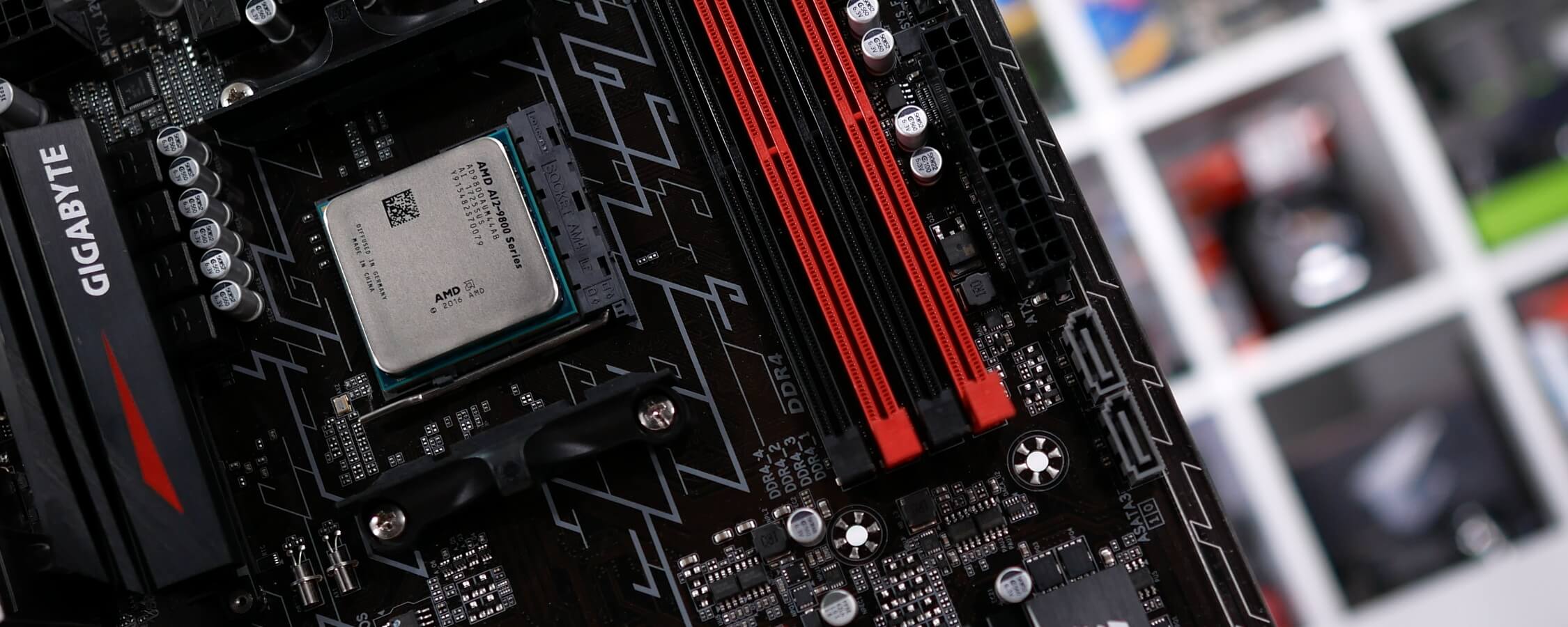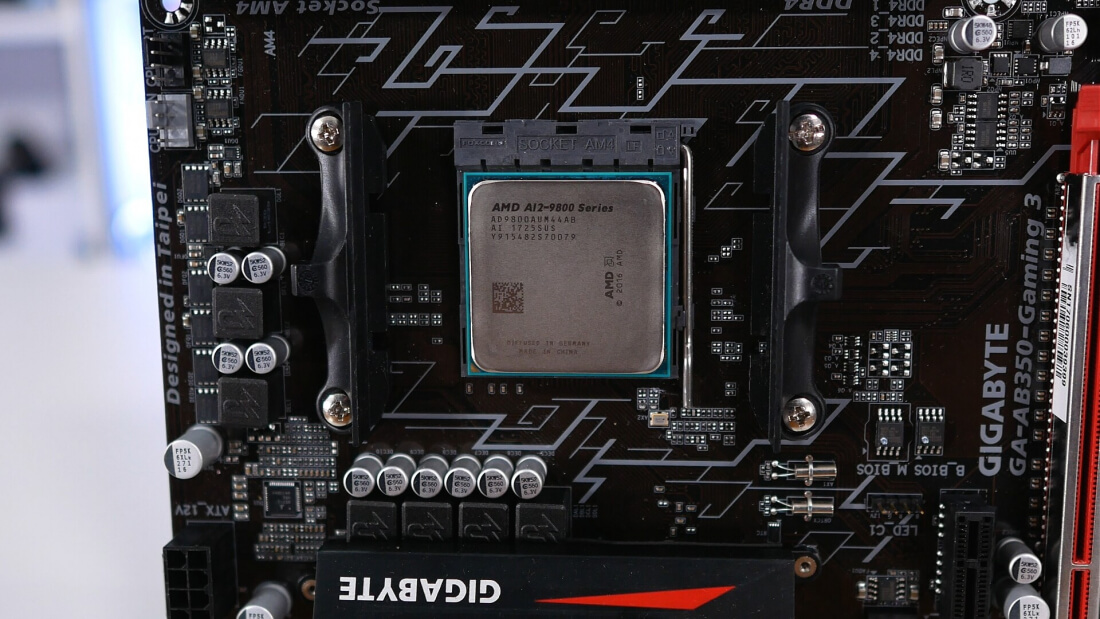AMD unleashed Ryzen earlier this year and it's been happy times for enthusiasts ever since. Budget shoppers recently received the quad-core Ryzen 3 models while those on truly tight budgets have been holding out for the APUs which integrate both a CPU and GPU under one roof.
The first wave of these new APUs are known by the codename "Bristol Ridge" and while they do indeed support the new AM4 platform, they aren't what many believed (or at least hoped) they would be.
These aren't Zen-based APUs, which probably won't arrive till some time next year. What we have here are Excavator-based CPU cores, or a refined Bulldozer architecture, and I am using the word "refined" rather loosely here. The A12-9800 for example sports four Excavator cores alongside a generically named Radeon R7 GPU which features 512 stream processors.
Although Bristol Ridge was released through OEMs late last year, it recently became available on the retail market and this has excited many of you. The A12-9800 now costs $110 and along with promising pretty decent integrated graphics performance, you can take advantage of it on a new AM4 motherboard, such as those sporting the B350 chipset.
There is also a much cheaper and equally popular version without the integrated GPU called the Athlon X4 950 and at $60 people have already started snapping them up. However the less impulsive buyers among you have been desperately asking us to check these new AM4 parts out to see if there any good, so let's do that...
Ryzen System Specs
|
Kaby Lake System Specs
|

Let's get this out of the way right off the bat: for now, the Bristol Ridge range only supports up to DDR4-2400 memory. Right now there is simply no way to set the memory speed higher, at least on all the motherboards I tried. Memory performance was always a big issue for the Bulldozer architecture and after numerous revisions it was still rather pathetic compared to the Intel competition. Here we see the G4560 pushing more than twice the bandwidth of the A12-9800. Keep in mind this APU has to also feed an integrated GPU with that measly 11.2GB/s bandwidth, pretty tragic stuff that is.
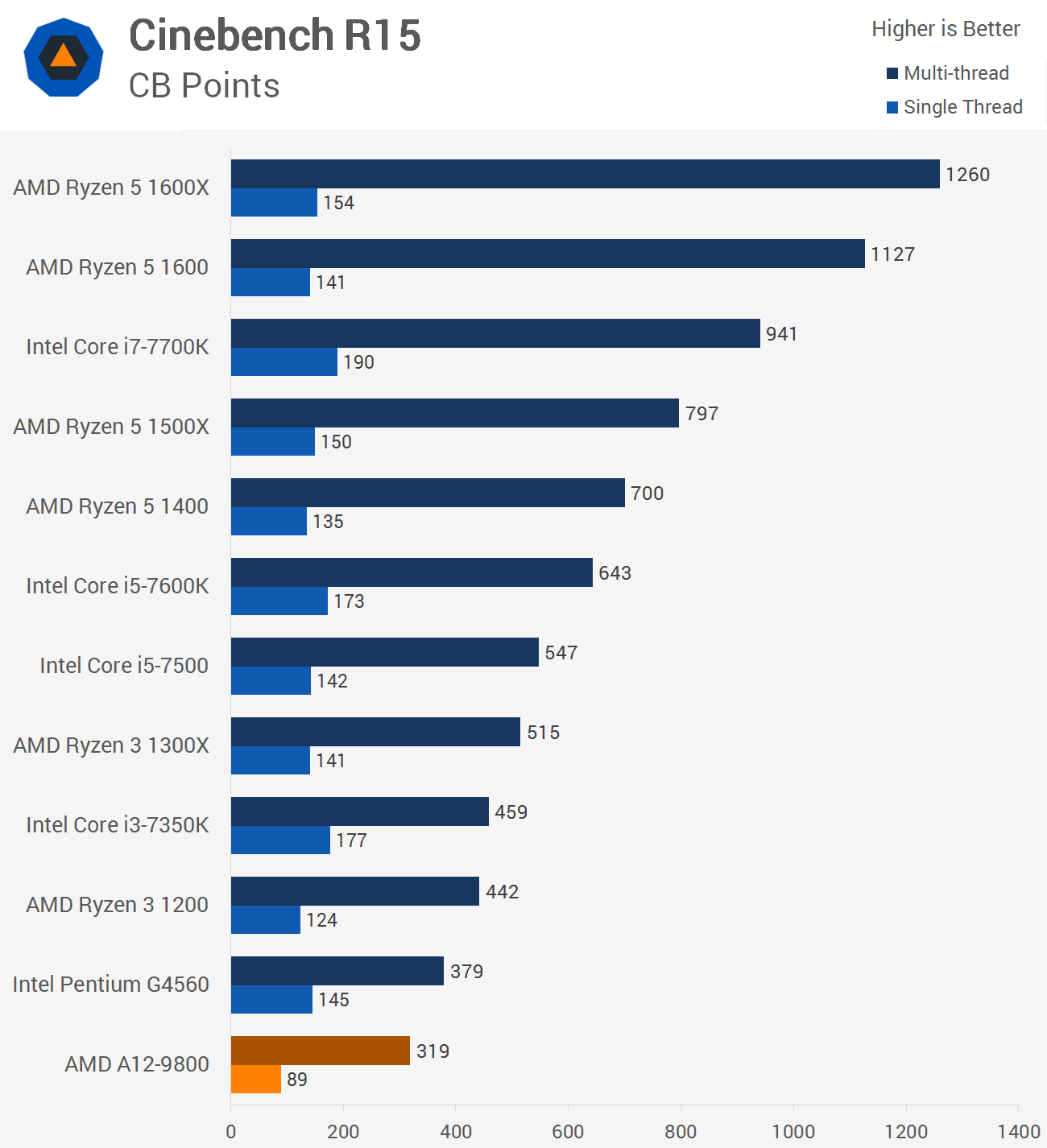
Next up we have Cinebench R15 which is a good synthetic benchmark for gauging how powerful a CPUs single and multi-thread performance really is. As you can see the dual-core Pentium G4560 has no trouble hosing the A12-9800 in both the single and multi-threaded tests and it's clocked quite a bit lower. Yep, this is all looking very Bulldozerish to me so far.
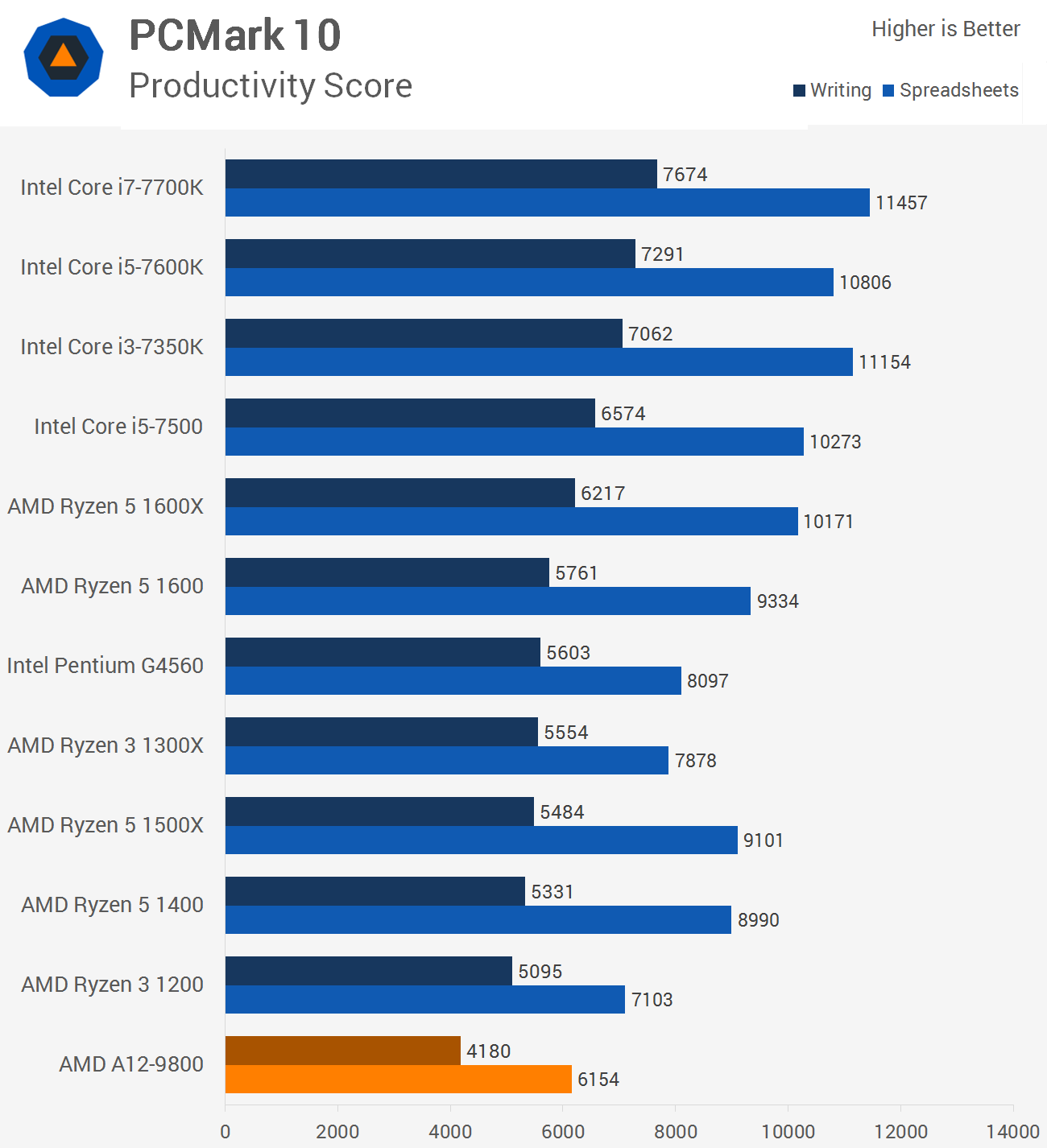
PCMark 10 throws a number of common productivity workloads at the system and here we can see the individual scores for the writing and spreadsheets tests. Even these basic tasks present a real challenge for the quad-core APU.
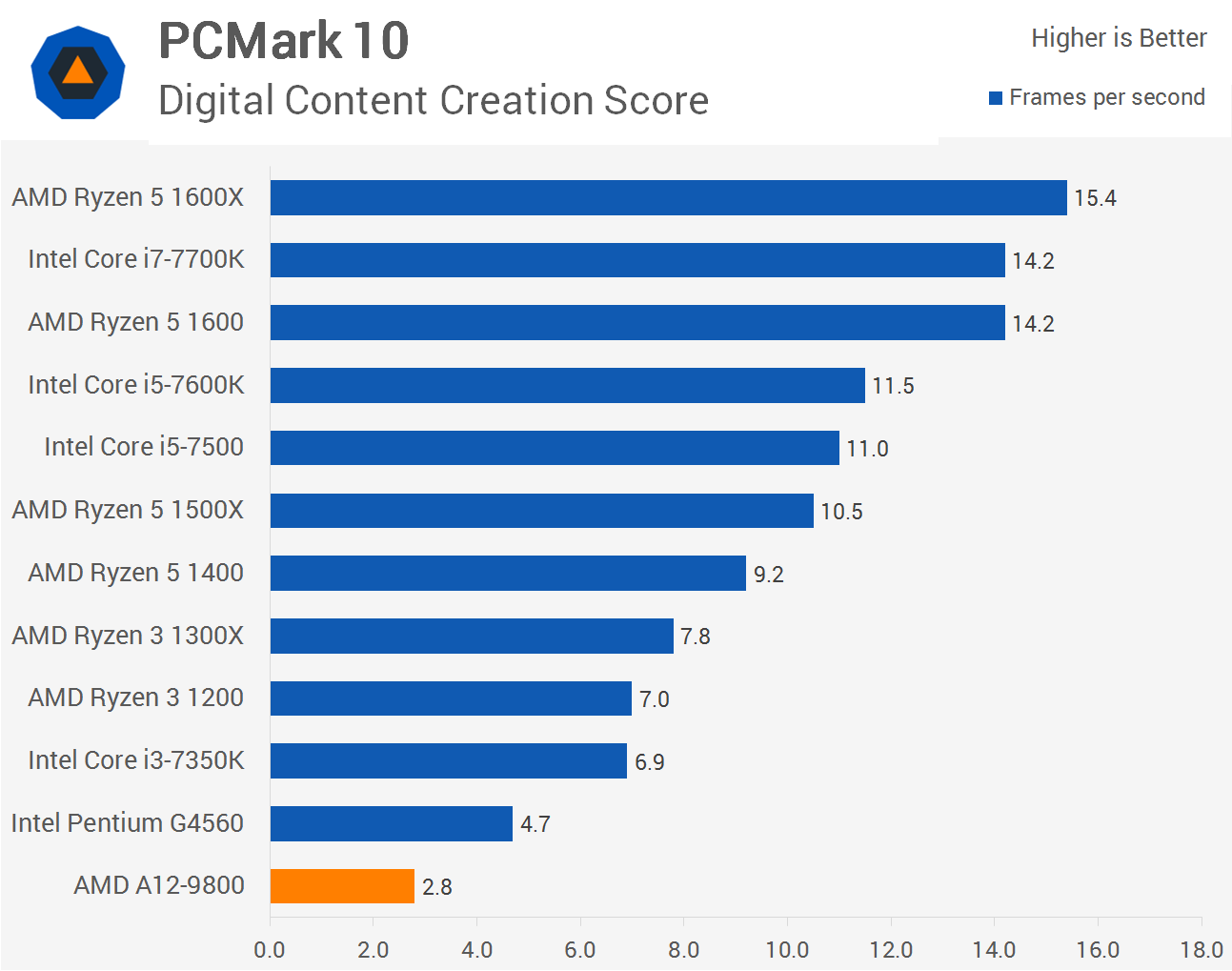
Don't even bother with content creation. Here the G4560 outscored the A12-9800 by by a massive 64% margin. Dual-cores rule and old Excavator-based CPUs drool...

Moving on we tried out the Monte Carlo simulation workload and in this test AMD's new APU keep us waiting for almost 16 seconds or 64% longer than the G4560.
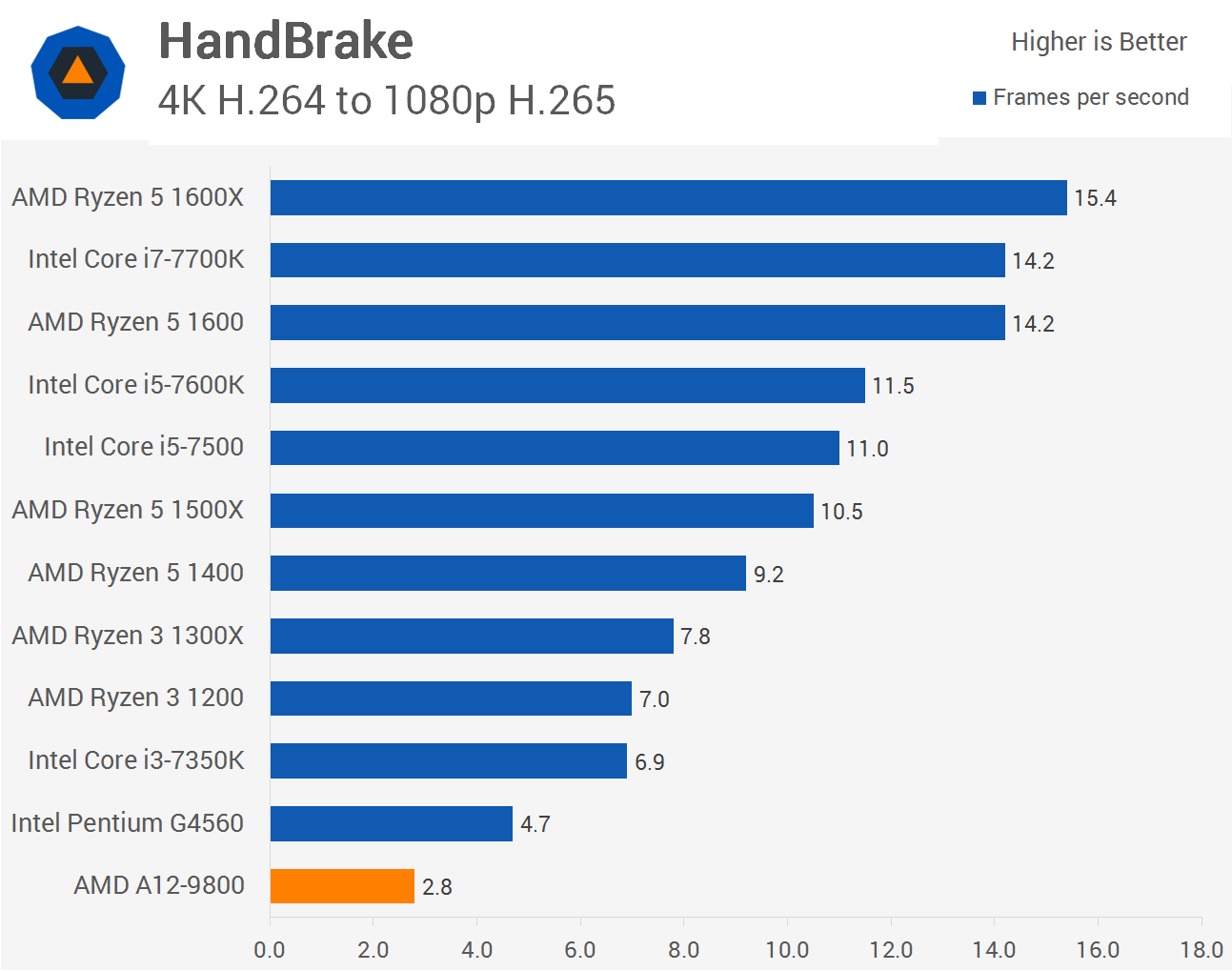
Looking to encode on a budget? Well then get the Ryzen 3 1200 because it was 150% faster for the same price. You'll need a cheap GPU but that shouldn't be an issue for more than twice the CPU firepower.
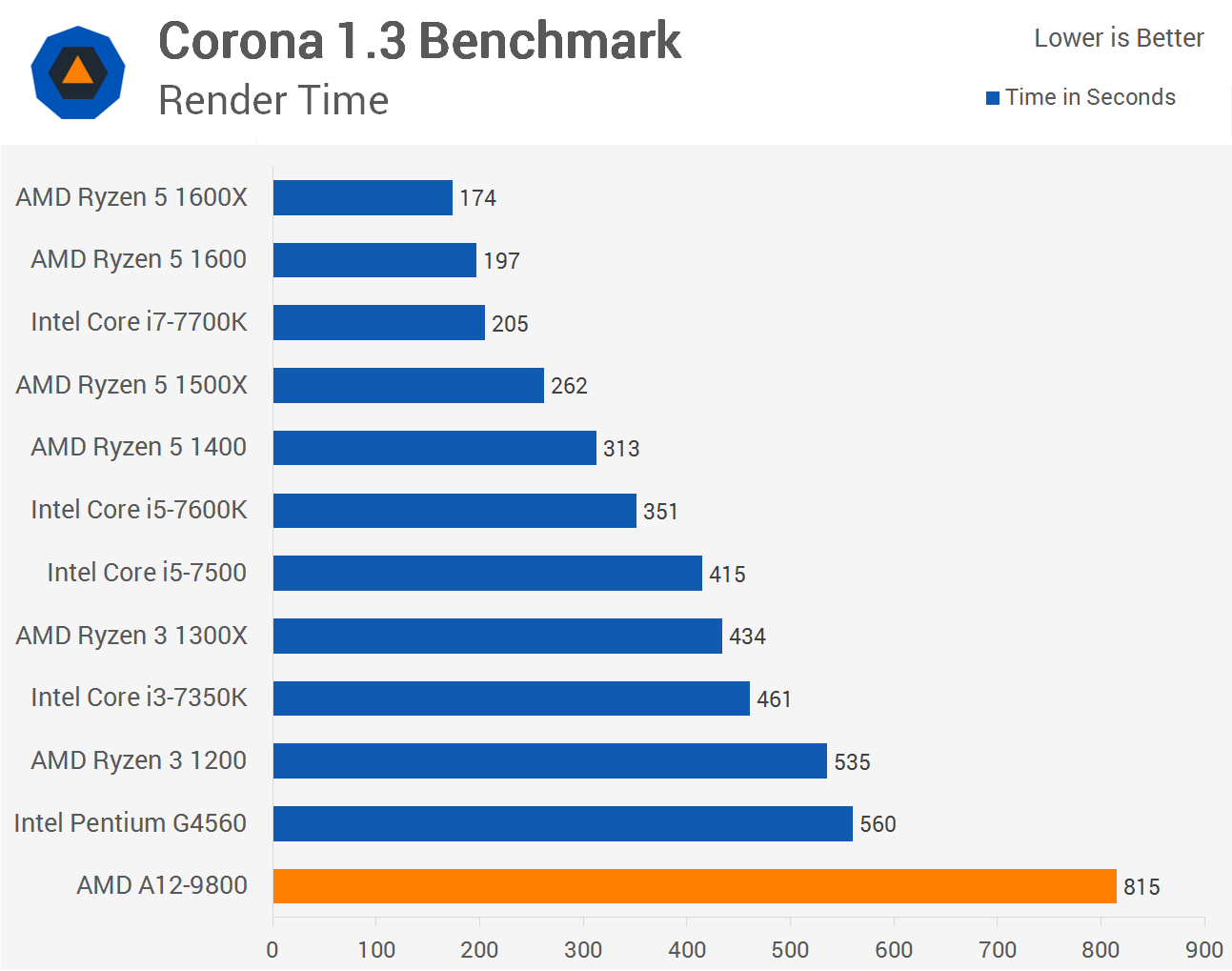
The A12-9800 also took 46% longer than the G4560 in the Corona benchmark and 52% longer than the R3 1200.

The A12-9800's Blender results aren't actually that bad as it beat the G4560, though it has to be said the G4560 puts in a poor showing in this test. The APU was still 46% slower than the Ryzen 3 1200.
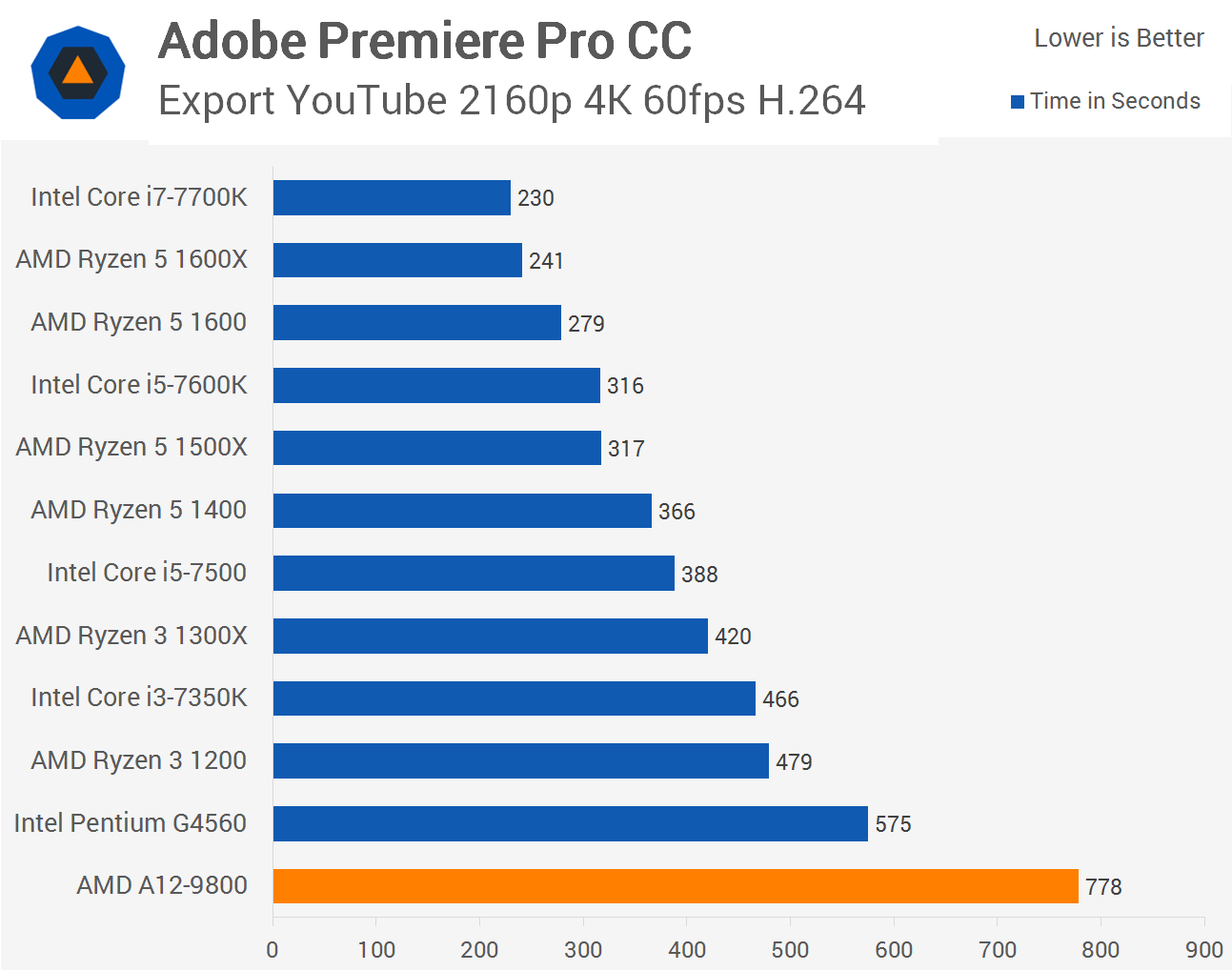
If you're buying the A12-9800 for a cheap video creation rig, I hope you're only making minute-long skits because our 1 minute and 30 second video took roughly 13 minutes to render.
